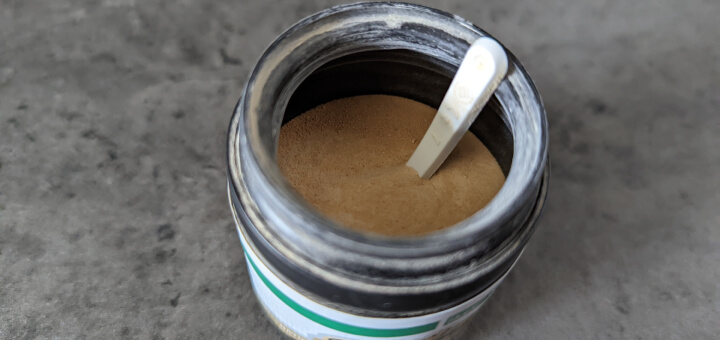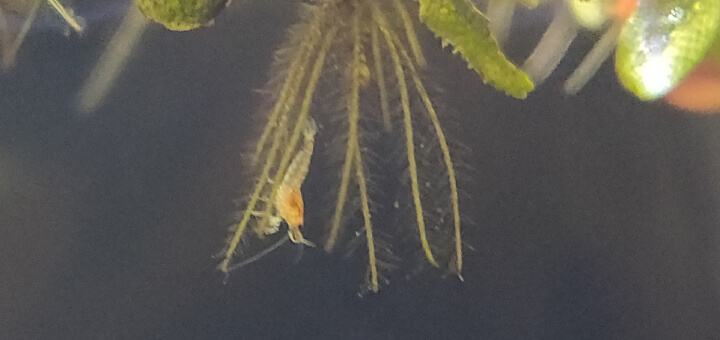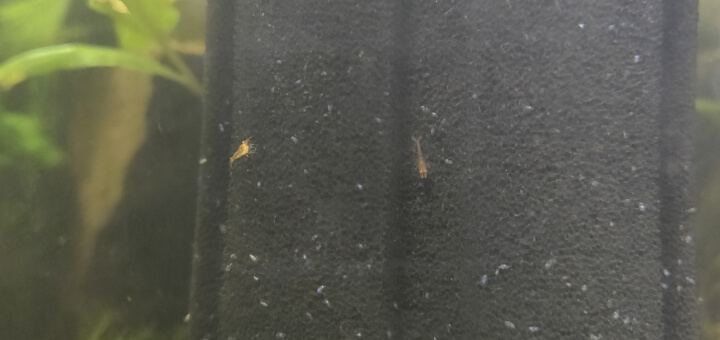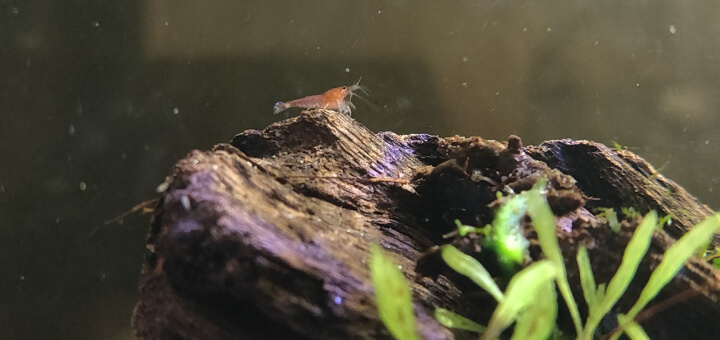There are a few useful tips that you can use to help your baby shrimp survive and quickly grow your colony’s population.
Food
Baby shrimp normally won’t move much in their first few weeks after hatching. This makes it incredibly important to ensure that your tank has plenty of food available for them.
An aged aquarium which is heavily planted is the ideal setup. Small sections of algae will grow on the extra surface area along with biofilm, which will make up the vast majority of the diet for the baby shrimp.
If you don’t know if there’s enough for the babies to eat in the tank you should introduce some long lasting or baby specific food.
You can get food created specifically for baby shrimp like Shrimp King Bio Tase Active, a fine powder that you sprinkle into the water. Try to spread it around over your water so that it spreads evenly through the aquarium and gets more coverage.

Other foods that are long-lasting like leaf litter or snowflake food will can provide extra areas for biofilm to grow. Again, try to spread out the leaf litter so that more baby shrimp will be able to easily reach it.
Hiding places
After a baby shrimp hatches from their egg, they usually disappear into your hardscape for their first few weeks.
Shrimp will typically carry between 20 and 30 eggs, and even if all of them hatch without problem, you will probably only see a handful of babies in the first few days.
During their first few months they will grow very quickly, meaning they molt much more frequently than they would in adulthood.
A freshly molted shrimp is vulnerable without their hard shell so they’ll try and find safety and shelter in hiding for a while. Ensuring they have plenty of options for hiding spots will help reduce their stress during this time.

Putting floating plants in your aquarium is another great way to help baby shrimp. The roots often have fine hairs which can trap floating detritus and debris in the water and make it easy for eating later. They’re also a great hiding place for the young shrimp to find shelter in.
Water parameters
As the baby shrimp grow rapidly in size in their first months it’s important to ensure the water parameters are optimal.
Having the correct balance of GH and KH in your water will provide the babies with all the minerals they need to grow and molt safely.
Water changes
Younger shrimp are preferred when buying new shrimp as they can adapt more easily to new parameters. Having said that, it’s still a stressful experience for them so you should try and keep your water quality as consistent as possible.
Water changes should be done carefully, preferably using the drip technique to add the new water.
Depending on how you remove the water, you should be careful not to accidentally suck up any baby shrimp. They can be incredibly small and often translucent in colour so they’re not always easy to spot.
Shrimp safe filter
A shrimp safe filter is a necessity for a tank with babies.
Using a filter with fine mesh or sponge filters on the intake will prevent any tiny shrimp getting accidentally caught in the system. The fine mesh will also trap a lot of detritus that make up a large portion of their natural diet.


